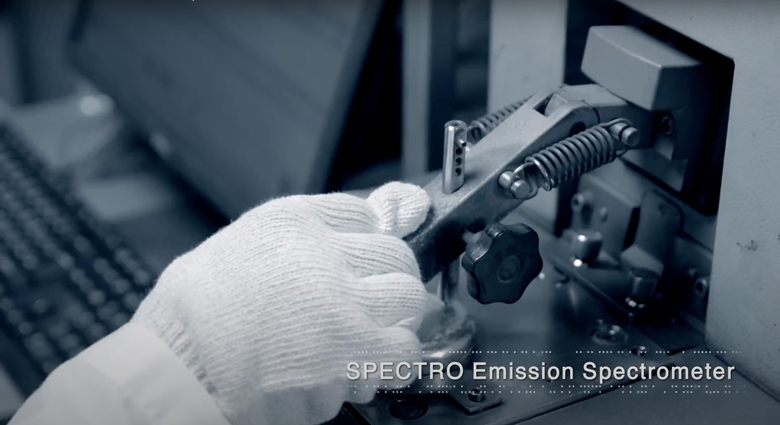
How does Ming Ming monitor gravity casting process and control quality?
Controlling the quality in the casting process is crucial to ensuring that the produced cast parts meet the desired specifications and standards. Here are several key practices and strategies, which are essential for effectively controlling the quality of the casting process:
6.1.Quality control before casting
1. Mould design and preparation: The die mould should be properly designed with the correct gating and runner systems to allow for smooth metal flow and minimise turbulence. Precision machining and maintenance of the mould are essential for maintaining accurate part dimensions and preventing defects.
2. Material selection:The metal alloy should be appropriate, based on the desired properties of the final part, such as strength, corrosion resistance, and thermal conductivity. The quality and consistency of the metal alloy needs to go through verification to prevent impurities and variations that could affect the casting process.
6.2.Quality control during casting
3. Process monitoring and control: Advanced process monitoring tools and sensors help track crucial parameters like temperature, pressure, and metal flow during casting. A closed-loop control system is conducive to make real-time adjustments based on monitored data, maintaining consistent conditions.
4. Metal melting and preparation: Proper melting and alloying techniques ensure the metal composition remains consistent. Degassing and fluxing methods for removing impurities and gases from the molten metal can enhance the casting quality.
5. Die lubrication: The application of appropriate die lubricants or release agents can prevent sticking and improve metal flow into the mould cavity.
6. Molten pouring optimization: Adjusting the molten pouring speed can achieve optimal metal flow and minimise defects like porosity and air entrapment.
7. Cooling and solidification: Controlling the cooling rate helps achieve uniform solidification, minimising internal stresses and enhancing mechanical properties.
6.3.Post-casting quality control
8. Quality inspection and testing:
- Regular visual inspections help identify surface defects, dimensional discrepancies, and other issues.
- Non-destructive testing methods such as X-ray, ultrasonic testing, and dye penetrant inspection are useful for detecting internal defects.
9. Post-casting processes: Post-casting processes such as trimming, deburring, machining, and surface finishing are often used to achieve the desired final specifications.
10. Documentation and data analysis: To continuously improve cast quality, detailed records of process parameters, materials used, and inspection results for each casting are essential. This data should be analyzed to identify trends, potential issues, and areas for process improvement.
11. Continuous improvement: A culture of continuous improvement helps ensure cast part quality and customer satisfaction. This process should involve employees in identifying and addressing process inefficiencies and quality concerns.
6.4..How does Ming Ming monitor casting process and control quality?
The quality control in gravity casting should be done through the whole process, from the design of the pattern to the inspection of the end product. During the discussion with the customer, the chosen casting process, the choice of alloys, and technical properties are an important start.
In the casting process, the following parameters must be monitored and controlled: shrinkage allowance and machining allowance for the pattern, the design and control of the core and the mould, the heating temperature of the metal, the amount of gases inside the molten metal, directions of pouring, the velocity and friction during the pouring, and the solidification time, and shrinkage of the cast object.
The final cast should go through quality inspection such as dimensional measurement, chemical composition analysis, mechanical properties testing, metallurgical analysis, and non-destructive testing. Find out more.
At Ming Ming, we serve customers based on our T.O.R.S. principle and are earnest in bringing customers the premium-quality cast objects with reasonable prices.
| Prev Back Next |
